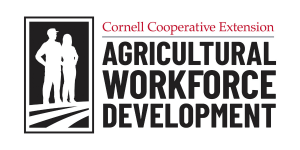Dr. Bob Milligan
We all know that a child’s favorite word during the ‘Terrible Twos’ is “NO”! So, what becomes the favorite word of older children? Let me suggest it is ‘WHY’!
What’s going on inside the minds of children that ‘WHY’ becomes such a common response? Children are naturally inquisitive. What do they need to make better decisions? The answer is more information! How do they get more information? They ask ‘WHY’?
What happens as we become adults? Do we need or desire less information? I think not; however, we do learn that asking ‘WHY’ isn’t always the adult way to act. And so, we often jump to conclusions that what’s happening around us is unfair because we lack evidence of fairness. We’re missing the ‘WHY’!
What about employees? They’re especially unlikely to ask ‘WHY’ because they don’t want to seem confrontational toward ‘the Boss’. However, without a ‘WHY’ explanation, they often conclude that what they’re being told is unfair and become frustrated.
Explaining ‘WHY’ is one of the easiest ways to enhance productivity, increase trust, foster self-confidence, and improve your relationship with your employees.
—
El Poder del POR QUÉ
Dr. Bob Milligan
Todos sabemos que la palabra favorita de los niños pequeños es: ¡NO! Entonces, ¿cuál es la palabra favorita de los niños mayores? Permítanme sugerir que es: ¡POR QUÉ!
¿Qué está ocurriendo en las mentes de los niños para que esta respuesta sea tan común? Los niños son naturalmente curiosos. ¿Qué necesitan para tomar mejores decisiones? ¡La respuesta es: más información! ¿Y cómo la obtienen? Ellos preguntan: ¡POR QUÉ!
¿Qué sucede cuando nos convertimos en adultos? ¿Acaso necesitamos o deseamos menos información? No lo creo; sin embargo, aprendemos que preguntar el ‘POR QUÉ’ en cada situación no es considerado una conducta adulta. Entonces, a menudo llegamos a la conclusión de que lo que nos está sucediendo es o puede ser injusto porque carecemos de evidencia de lo que es justo. ¡Nos falta el ‘POR QUÉ’!
Y, ¿qué ocurre con los empleados? Es especialmente improbable que quieran preguntar ‘¿POR QUÉ?’ porque esto podría interpretarse como una confrontación hacia el ‘Jefe’. Sin embargo, sin la explicación del POR QUÉ, es muy probable que concluyan que lo que les están diciendo es injusto y se frustrarán.
Explicar el ‘POR QUÉ’ es una de las formas más sencillas de mejorar la productividad, aumentar la confianza, fomentar la autoconfianza y mejorar la relación con sus empleados.
______________________________________________________________________
By Dr. Bob Milligan, Ph.D. Translated by Mary Lewis, Cornell University. Permission granted to repost, quote, and reprint with author attribution.
The post The Power of WHY appeared in The Ag Workforce Journal.


 Inspections:
Inspections: